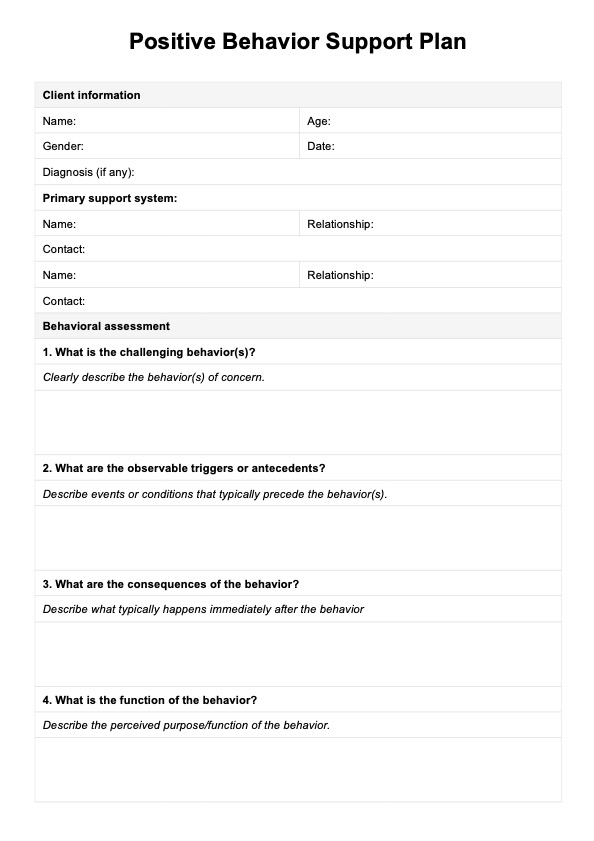Positive behavior support (PBS) is an evidence-based approach that promotes positive behaviors while addressing challenging and interfering behaviors. In school settings, PBS focuses on teaching new skills, replacement behaviors, and strategies to prevent problem behavior. It benefits students by fostering a supportive environment that enhances learning, communication skills, and valued outcomes, such as increased independence and engagement.

Positive Behavior Support Plan
Use our comprehensive Positive Behavior Support Plan to enhance client outcomes, foster positivity, and tailor interventions.
Positive Behavior Support Plan Template
Commonly asked questions
A Positive Behavior Support Plan provides individualized strategies tailored to a child’s unique needs, focusing on replacing problem behaviors with positive alternatives, also known as positive behavior supports. For children with intellectual and developmental disabilities, the plan incorporates person-centered planning and collaboration with the IEP team to ensure that interventions align with the child’s strengths, goals, and classroom expectations. This approach enhances their communication skills, learning opportunities, and overall quality of life.
Behavior specialists are essential in developing and implementing Positive Behavior Support Plans. They conduct assessments to understand why a behavior occurs, identify triggers, and design interventions to address challenging and problem behaviors. Their role includes teaching new skills and replacement behaviors, training educators and caregivers in effective strategies, and evaluating the plan’s effectiveness over time.
EHR and practice management software
Get started for free
*No credit card required
Free
$0/usd
Unlimited clients
Telehealth
1GB of storage
Client portal text
Automated billing and online payments











